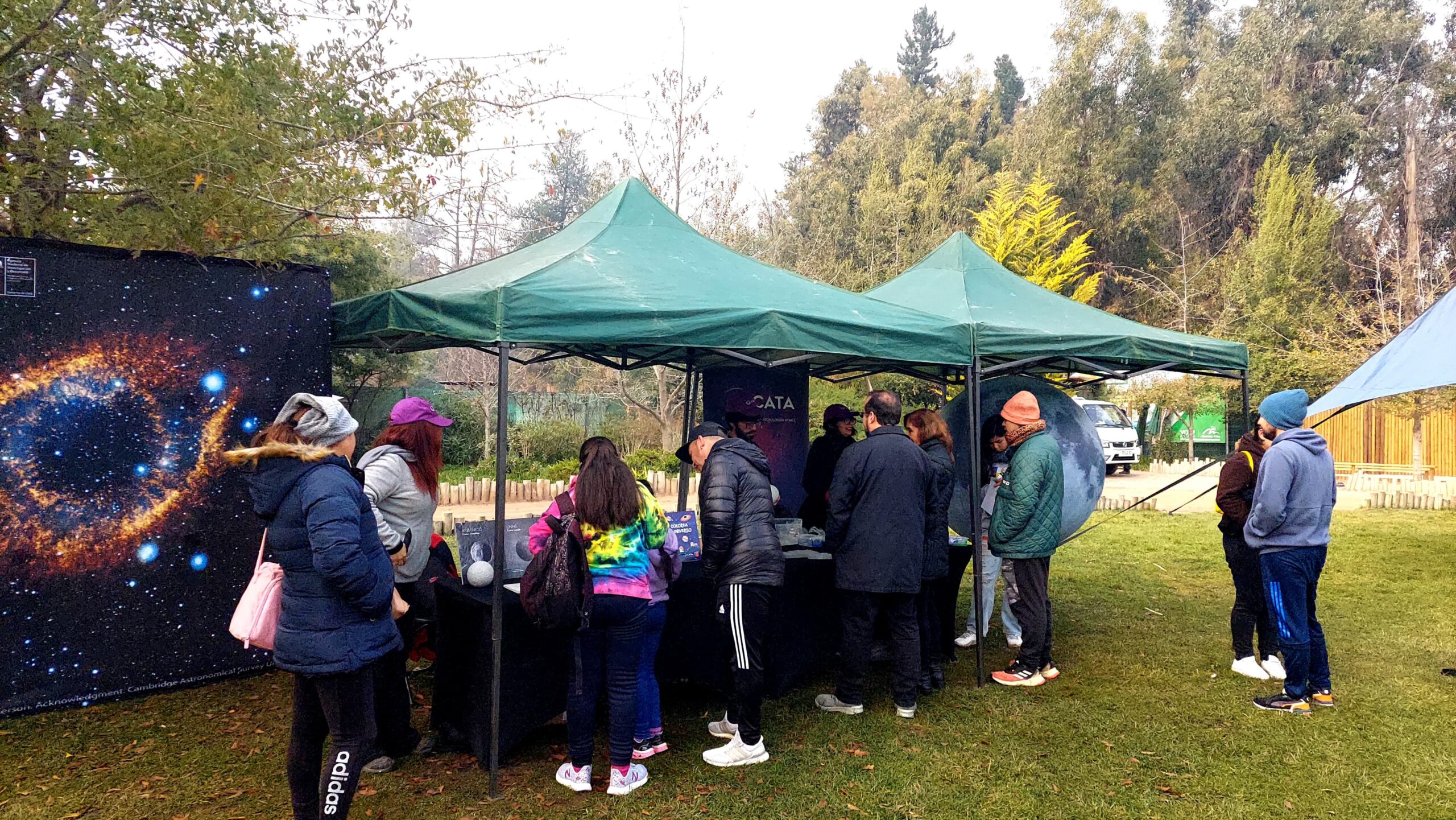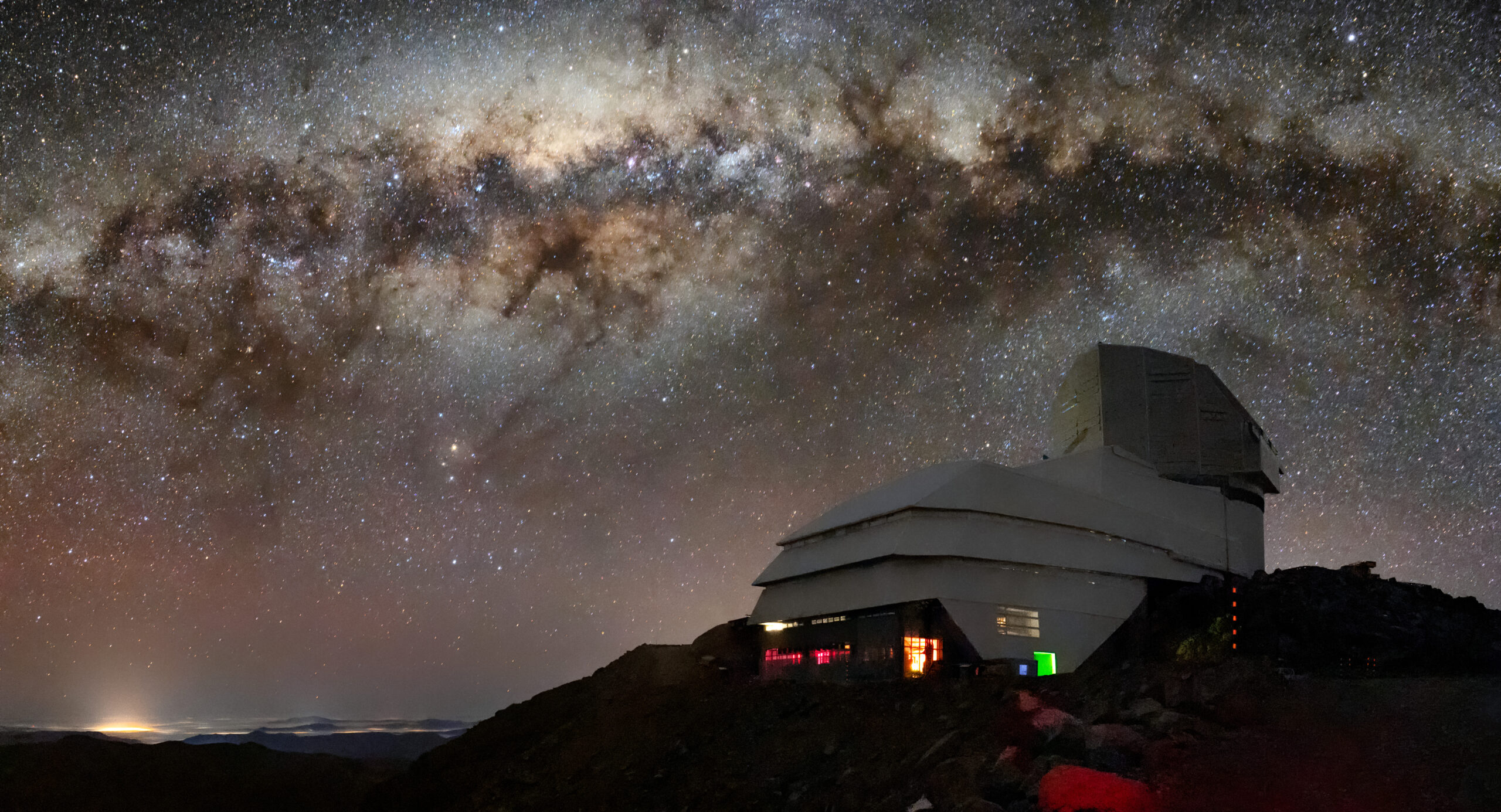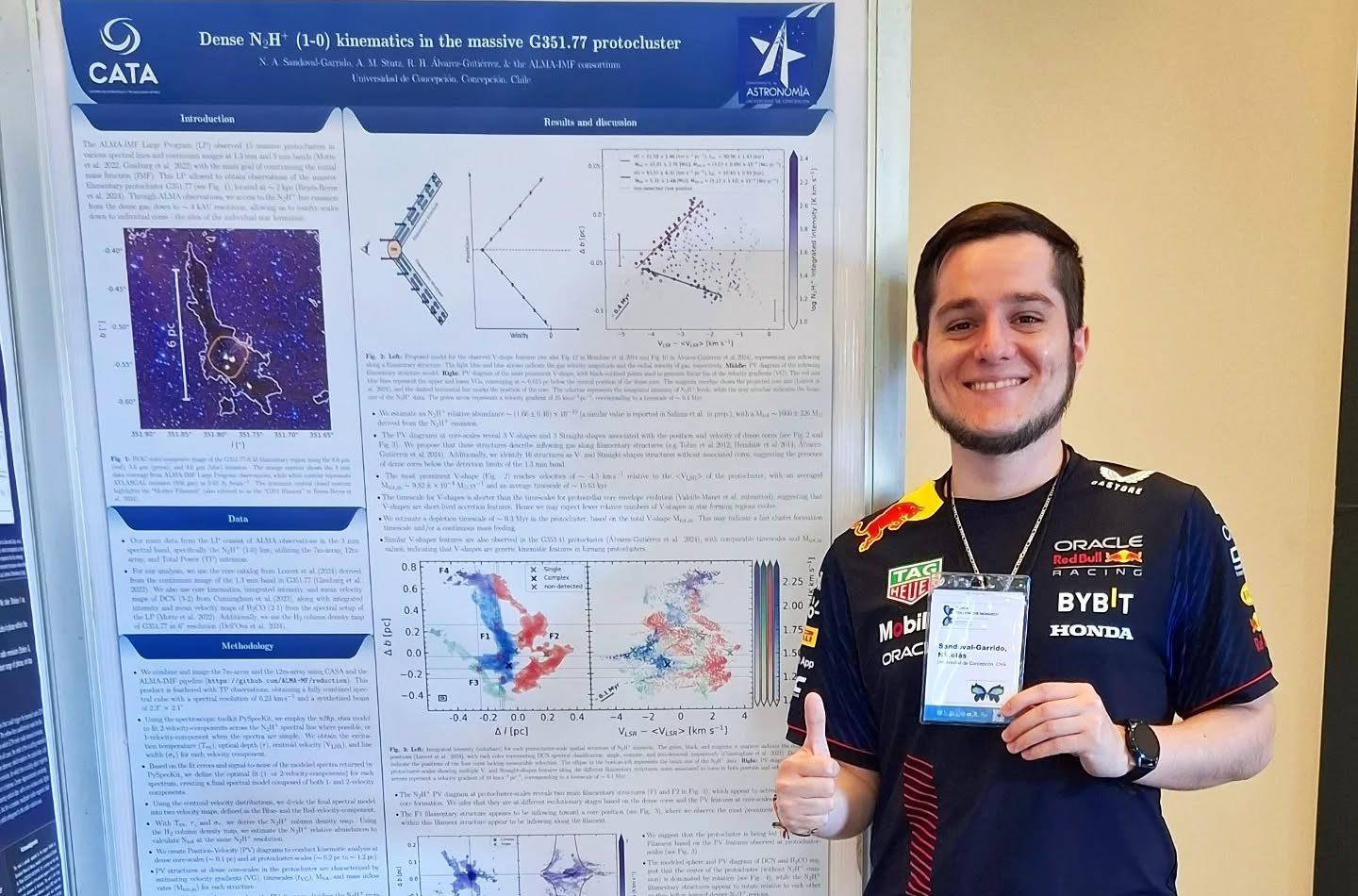
New more accurate method to measure age of globular clusters through binary stars
CATA student Nicolás Cristi-Cambiaso, together with a team in which the Center's Associate Researcher Marcio Catelán participated, was able to establish an algorithm that will facilitate the study of this type of stars.
Globular clusters are among the oldest objects in the Universe and their age plays a crucial role in cosmology. The abundance of helium directly influences the estimation of their age, but it is difficult to measure it directly in the stars of these clusters.
Nicolás Cristi-Cambiaso, a graduate student at the Center for Astrophysics and Related Technologies (CATA), recently prepared a paper that implies an important advance in these processes.
This study proposes a novel method to measure the age and helium abundance in globular clusters using eclipsing binary systems close to the TO main sequence dropout point, a point in stellar evolution where a star begins to deplete its central hydrogen and moves away from the main sequence, being a key indicator of the age of a cluster.
The analysis focuses on the V69 system, in the globular cluster 47 Tucanae (47 Tuc), and suggests that a differential approach, comparing the parameters of the two stars, can reduce the dependence on stellar models and systematics when estimating the age and helium abundance. The proposed method could improve the accuracy of these measurements and reduce the biases of previous models, providing a more robust tool for understanding stellar evolution and the Universe.
“Eclipsing binary systems are two stars that are gravitationally bound together that we can see as one passes in front of the other and have an eclipse. These are in a very specific stage of their evolution, where parameters of the star’s evolution, such as its luminosity and temperature, are very sensitive to its age, and now we can determine it with more certainty,” explains Nicolás Cristi-Cambiaso, a master’s student in Astronomy at the Catholic University.
The paper “Relative evolution of eclipsing binaries: A tool to measure globular cluster ages and He abundances” is approved for publication in Astronomy & Astrophysics.
The novelty lies in the differential approach. While traditional methods use absolute parameters of the stars, this study shows that, by comparing the two components of the binary system relatively (considering that they share the same age and helium abundance), more reliable and less stellar model-dependent estimates are achieved. In addition, this approach could be applied to other similar systems, providing a new avenue for studying the evolution of globular clusters.
“Observations had already been made with several telescopes, using photometry and spectroscopy and, thanks to that, we had a baseline of parameters of the stars in the system. Then, we created a completely new algorithm to compare these parameters with thousands of models, at the same time, with different chemical compositions, with different masses and with different ages, and among all of them we tried to estimate which one was the most similar to the eclipsing system we were observing”, adds the CATA student.
The study also discusses how differences in stellar evolutionary models affect age and helium estimates. Two sets of evolutionary models are compared: PGPUC and Victoria-Regina, observing that the differential approach is less sensitive to these variations between models.
CATA played a relevant role in providing resources for the preparation of this work and also in its subsequent dissemination. Nicolás presented the findings at the conference “Unveiling the interiors of the stars to grasp stellar populations”, recently held in Sicily, Italy.
Recent news
-
 Publicado el: 09/07/2025Patricia Tissera is recognized as full professor by the Pontificia Universidad Católica de Chile
Publicado el: 09/07/2025Patricia Tissera is recognized as full professor by the Pontificia Universidad Católica de Chile -
 Publicado el: 04/07/2025CATA researchers among the best in Chile according to international ranking Research.com
Publicado el: 04/07/2025CATA researchers among the best in Chile according to international ranking Research.com -
 Publicado el: 30/06/2025CATA Director strengthens ties in her second institutional tour
Publicado el: 30/06/2025CATA Director strengthens ties in her second institutional tour -
 Publicado el: 30/06/2025CATA celebrated Asteroid Day 2025 at the Pueblito de Las Vizcachas Park
Publicado el: 30/06/2025CATA celebrated Asteroid Day 2025 at the Pueblito de Las Vizcachas Park -
 Publicado el: 26/06/2025Vera C. Rubin: the telescope that watches the sky and anticipates the future of astronomy
Publicado el: 26/06/2025Vera C. Rubin: the telescope that watches the sky and anticipates the future of astronomy
Categories list
- Acknowledgments 20
- Astrobiology 5
- AstroCluster 1
- Black holes 13
- Corporativo 49
- Cosmology 4
- Descubrimientos 19
- Disclosure 46
- Exoplanets 13
- Extension 4
- Galaxies 17
- Galaxies formation 2
- Inter y Transdisciplina 2
- Local Universe 13
- Publications 5
- Sin categorizar 31
- Solar System 11
- Stellar formation 6
- Technology 9
- Technology Transfer 12



